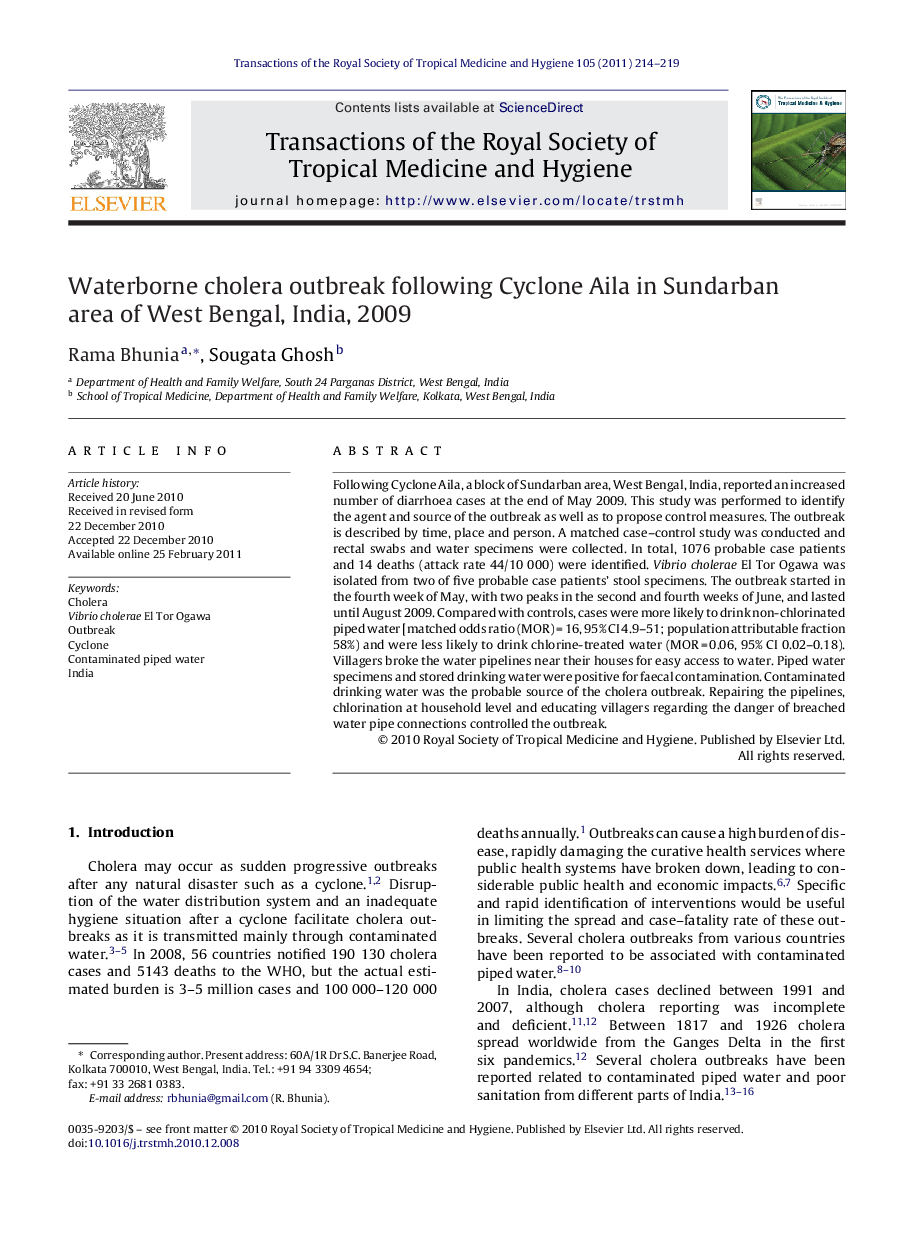| Article ID | Journal | Published Year | Pages | File Type |
|---|---|---|---|---|
| 3420592 | Transactions of the Royal Society of Tropical Medicine and Hygiene | 2011 | 6 Pages |
Following Cyclone Aila, a block of Sundarban area, West Bengal, India, reported an increased number of diarrhoea cases at the end of May 2009. This study was performed to identify the agent and source of the outbreak as well as to propose control measures. The outbreak is described by time, place and person. A matched case–control study was conducted and rectal swabs and water specimens were collected. In total, 1076 probable case patients and 14 deaths (attack rate 44/10 000) were identified. Vibrio cholerae El Tor Ogawa was isolated from two of five probable case patients’ stool specimens. The outbreak started in the fourth week of May, with two peaks in the second and fourth weeks of June, and lasted until August 2009. Compared with controls, cases were more likely to drink non-chlorinated piped water [matched odds ratio (MOR) = 16, 95% CI 4.9–51; population attributable fraction 58%) and were less likely to drink chlorine-treated water (MOR = 0.06, 95% CI 0.02–0.18). Villagers broke the water pipelines near their houses for easy access to water. Piped water specimens and stored drinking water were positive for faecal contamination. Contaminated drinking water was the probable source of the cholera outbreak. Repairing the pipelines, chlorination at household level and educating villagers regarding the danger of breached water pipe connections controlled the outbreak.
